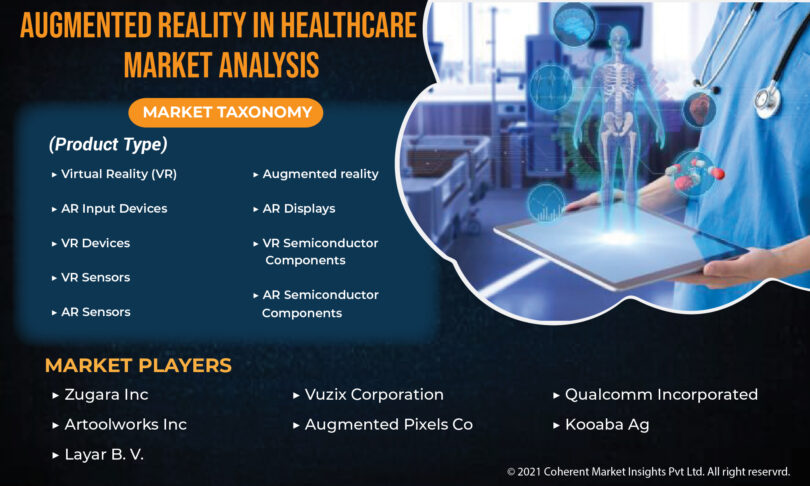Augmented reality is used in healthcare facilities across the world today, for applications that include vein visualisation, surgical visualisation and education. Recent hardware and software advances have reduced the cost of augmented reality while significantly improving the experience for users and developers. AR integrates digital information with the user’s environment in real time and is becoming more accessible and affordable for medical education and imaging, dentistry, and nurse training. AccuVein, VIPAR, ARnatomy, and VA-ST are among the available AR solutions for health care.
The applicatory potential of augmented reality technology within the medical field is limitless. AR applications enable medical professionals to recreate real-world images of anatomical structures virtually, an image they can then project onto the surgical site in real-time using the HMD technology.
Get | Request Sample Copy with TOC, Graphs & List of Figures @
https://www.coherentmarketinsights.com/insight/request-sample/15
Technological advancements and high demand to minimize healthcare complexity is expected
Key Developments
Key players in the market are involved in various strategies such as collaboration and partnership to gain competitive edge in the market.
- In September 2018, Vuzix Corporation, a supplier of smart glasses and augmented reality technology products, entered into partnership with 1Minuut Innovation and Deloitte Netherlands to bring augmented reality innovation through smart glasses across the healthcare industry.
- In April 2019, Vuzix entered into partnership with VSee, a telemedicine technology supplier to create smart glasses, which will be offered for telemedicine.
- In October 2018, Vuzix’s Blade Smart Glasses App received Health Award at Cancer Corporation Code App Challenge at 2018 Cerner Health Conference held in Kansas, U.S.
Augmented reality is now used in medical training. Its applications range from MRI applications to performing highly delicate surgery. At the Cleveland Clinic at Case Western Reserve University, for example, students are taught the ins and outs of anatomy using AR headsets or augmented reality glasses.
Inquire more about this report @ https://www.coherentmarketinsights.com/insight/talk-to-analyst/15

